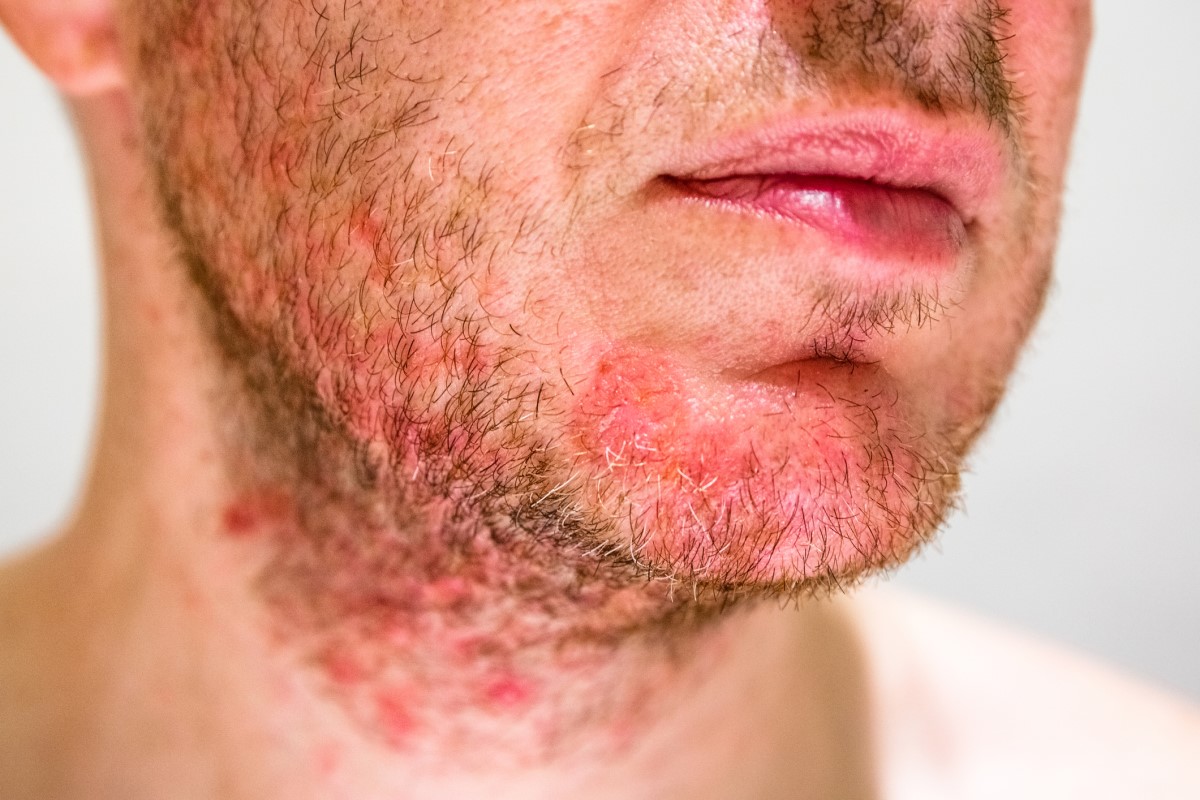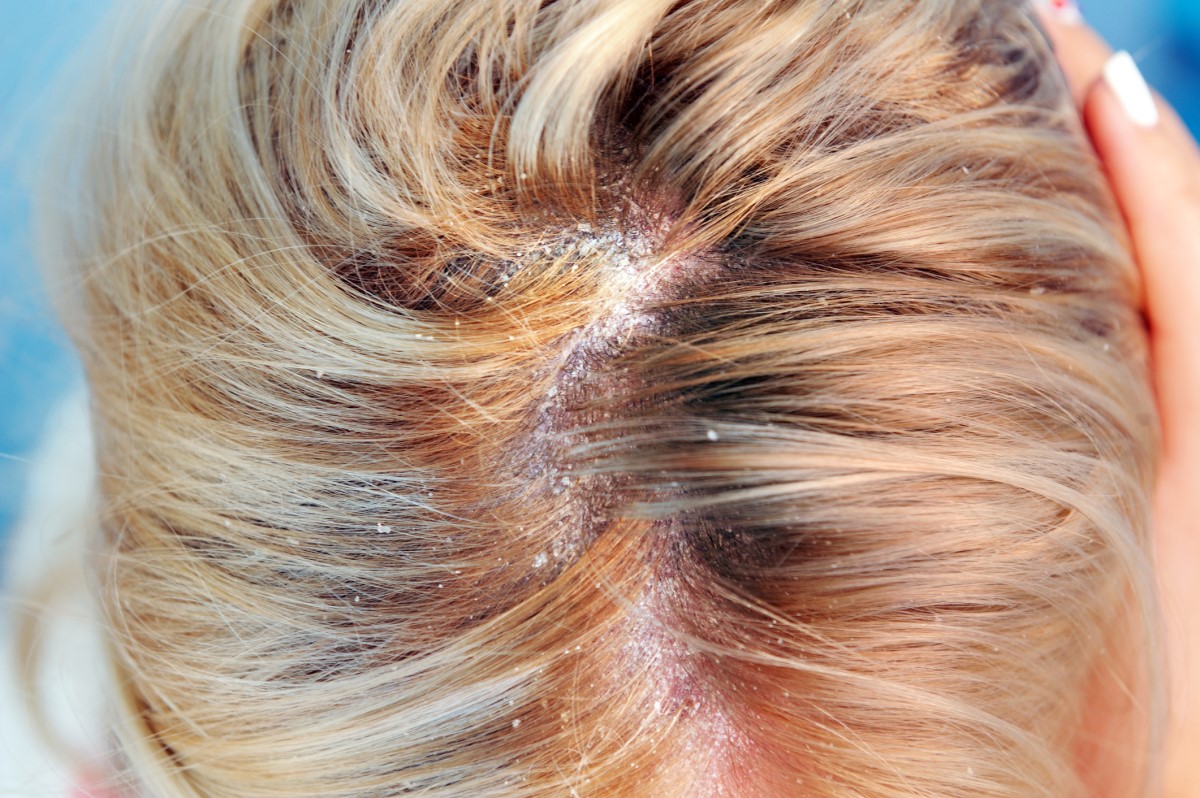- solen.sk - Seborrhoeic dermatitis, MUDr. Dušan Buchvald, PhD., Children's Dermatovenerology Clinic, Faculty of Medicine, Charles University in Bratislava
- solen.cz - Seborrhoeic dermatitis, differential diagnosticsand treatment in practice, MUDr. Naděžda Vojáčková, Dermatovenerologická ambulance Praha
- medicinapropraxi.cz - Seborrheic dermatitis
- praktickelekarenstvi.cz - Seborrhoeic dermatitis, MUDr. Milan Junášek, Dermatovenerological outpatient clinic, sálek-lasery-correction, Prague
- prolekare.cz - Lipophilic yeasts of the genus Malassezia and skin diseases. I. Seborrheic dermatitis
- prolekare.cz - Practical procedure of topical treatment of seborrheic dermatitis of the scrotum in adults.
- remedia.cz - Dermatitis seborrhoica
- mayoclinic.org - Cradle cap / in English
What is seborrheic dermatitis? What are the symptoms, causes? + Distribution

Seborrhoeic dermatitis is not a serious skin disease. However, it significantly affects quality of life.
Most common symptoms
- Skin pain
- Fever
- Increased body temperature
- Oily skin
- Wetting of the skin
- Dry skin
- Itchy skin
- Reddened skin
Characteristics
Many of us know this disease by the name of milky scab.
The disease was first described in 1887 by the German dermatologist Paul Gerson Unna. At that time it was known as seborrhoeic eczema. In 1953 Wolfgang Nikolowski changed the name of the disease to seborrhoeic dermatitis.
For a long time, seborrhoeic dermatitis was one big unknown. In 1979, Kligman summarized the knowledge about it at that time as "...a disease about which nothing is known, and what has been written is incorrect or irrelevant".
Seborrhoeic dermatitis is defined as a chronic inflammatory disease of the skin. It is chronic and often recurrent. It occurs in visible areas. For this reason, it can seriously affect the patient's psyche.
Approximately 3% of the population suffers from this disease. It affects men more often than women. Seborrhoeic dermatitis is not a communicable disease. Many of us think that the disease only affects children.
It can occur in patients in three age groups:
- children in the first three months of life
- in adolescence
- between the ages of 30 and 60
Causes
It is believed that an important role in the development of the disease plays:
Increased sebum production.
The sebaceous gland outlets are located on the entire surface of the skin. The exceptions are the palms of the hands and soles of the feet. Their greatest density is in the capillary area (the hairy part of the head), on the face, on the chest and on the back.
Sebum plays many roles in the human body:
- It protects against ultraviolet radiation
- provides protection from chemicals
- protects the skin from microbial colonisation
- contributes to the differentiation of the epidermis
- participates in specific hormonal reactions and pheromone production.
Sebum is composed of triacylglycerols, fatty acids, squalene, cholesterol esters, waxes and sterols. The production of sebum is controlled by hormones. In the following section we explain the relationship between sebum production and the development of seborrheic dermatitis.
See also the following information:
Oily skin.
Under the influence of maternal androgens, sebaceous glands are active in the neonatal and infant period. For this reason, the disease appears in children in the first three months of life. Later, their size decreases. The production of sebum decreases sharply.
At puberty, due to circulating androgens, sebum production increases again. Men have a higher sebum production than women.

This suggests that sebum plays an important role in the development of seborrhoeic dermatitis:
- The maximum incidence of the disease correlates temporally with the period of highest sebaceous gland activity (infants, adolescents and young adults).
- It most often affects areas with the highest density of sebaceous glands.
- It occurs more frequently in men than in women.
Lipophilic yeasts of the genus Malassezia
Lipophilic yeasts require an environment with sufficient fatty substances to survive. Sebum is a rich source of triacylglycerols.
For this reason, Malassezia yeasts have adapted to live in the environment of the upper layers of the skin, which are covered with a thin layer of sweat and sebum, thus providing them with suitable conditions for life.
The genus Malassezia comprises 13 species. M. restricta, M. globosa and M. sympodialis are most commonly found on human skin.
Did you know that...
Some species of the genus Malassezia are part of the normal microbial flora of human skin. Malassezia colonize 80-100% of healthy adult humans.
Seborrheic dermatitis is caused by an abnormal reaction of the patient (host) to their presence. Malassezia yeasts break down triacylglycerols. They use specific released saturated fatty acids for their metabolism.
The unconsumed unsaturated fatty acids remain on the skin surface. These can cause local irritation of the skin. This mechanism changes the composition of the sebum. This means that the free fatty acid content increases and the triacylglycerol content decreases.
The individual's sensitivity to the irritating effects of sebum components
Individual sensitivity is thought to be due to an inborn defect in the permeability barrier of the upper skin layer.
Unsaturated fatty acids, which are present in large quantities on the surface of the skin, can trigger an inflammatory reaction in an individually sensitive individual.
The inflammatory reaction is caused by the stimulation of arachidonic acid metabolism and the subsequent release of inflammatory mediators.
Risk factors include:
- excessive sweating (hyperhidrosis)
- genetic factors
- obesity
- stress
- menopause
- certain diseases (Parkinson's disease, diabetes mellitus, Cushing's disease)
- skin diseases (acne, rosacea)
- application of oil preparations to the skin
- systemic use of corticosteroids, immunosuppressive agents
- climatic factors
Skin symptoms in zinc deficiency may also resemble seborrhoeic dermatitis. Disorders of fatty acid metabolism are also known. Vitamin B deficiency may also cause the disease.
Seborrhoeic dermatitis often occurs in immunodeficiency associated with HIV infection (50% of cases). In young people, it may be a diagnostically important indicator of acquired immune deficiency syndrome.
The causative mechanisms can be divided into 3 groups:
- Constitutional - microbial, alimentary, metabolic, neuropathic causes.
- secondary - hormonal, allergic-toxic causes
- combinations of the previous groups
Symptoms
Classification of seborrheic dermatitis by age
1. Seborrheic dermatitis in children
This type affects children during the first 4 weeks to 3 months of life. However, it can also occur during the first year and a half. It appears mainly on the forehead, face, neck and large intertriginous areas.

Symptoms of the disease appear mainly on the top of the head. For this reason, it is also referred to as cradle cap.
In the vertex area (above the anterior fontanelle), a variable thickness of oily, thickened and yellow-coloured scales appears.
Symptoms of the disease may extend to the eyebrows and midface. In these areas, it appears as bright red sharply demarcated and slightly peeling deposits.
In the course of the disease, the intertriginous areas and the skin folds (neck, armpits, diaper area) are often affected. These are characterised by the accumulation of moisture and heat. In these areas, variously sized, inflammatory reddened foci form.
The intertriginous areas may become moist.
Inflammation of the deposits may result in secondary bacterial(Staphylococcus aureus, Pseudomonas aeruginosa) or mycotic infection (Candida albicans, Epidermophyton floccosum).
2. Seborrheic dermatitis in adults
In adulthood, oily or dry and in most cases whitish scales (dandruff/pityriasis capitis) may appear. The scaling may not be accompanied by an overproduction of sebum. Itching is absent or only mild.

In practice, there are several forms of seborrhoeic dermatitis...
Seborrheic eczematoid
Seborrhoeic eczematoid dermatitis is considered the mildest form of the disease. Eczematoid dermatitis is mainly localised on the trunk. In most cases it lasts for several weeks. It usually resolves spontaneously.
Bearing seborrhoeic dermatitis
It is characterised as a full-blown disease with a chronic, often recurrent course. It occurs mainly in the capillary area (hair of the head), in the retroauricular region, in the external ear canals and in the middle part of the eyebrows.
It also occurs in the intertriginous areas (neck, axillae, umbilicus).
Focal seborrhoeic dermatitis is divided into
- Seborrhoeic dermatitis capilitii (dermatitis seborrhoica capilitii)
This form of the disease affects approximately 10% of the population. It occurs mainly in the 3rd and 4th decade of life. The disease first manifests itself by redness and peeling.
Later on, different sized lesions develop, which tend to spread to the forehead, neck, external ear canal and retroauricularly.
In the mild form, dandruff forms, which may be dry, small and whitish. In some cases, it may be larger, yellow-coloured and greasy.

- Seborrhoeic dermatitis of the face (dermatitis seborrhoica facieii)
The symptoms of this type of seborrhoeic dermatitis are deposits of irregular circumscribed redness with oily scales. It occurs mainly in the middle part of the face (middle part of the eyebrows, nose).
In some cases, sensitivity to light may occur.
- Seborrhoeic dermatitis of the trunk (dermatitis mediothoracica seborrhoica figurata)
Symptoms of the disease include reddened lesions that tend to merge. Scaling is insignificant because scales are shed in these areas by excessive sweating.
The disease arises especially in winter when skin evaporation is restricted by wearing several layers of clothing.
Intertriginous seborrhoeic dermatitis
Occurs mainly in the intertriginous areas (axillae, submammary area, umbilicus, groin and perianal area). Symptoms of the disease include swelling, redness and the formation of fissures (ragades). Due to the location of the symptoms, secondary bacterial or mycotic infection is often present.
Disseminated seborrhoeic dermatitis
Disseminated seborrhoeic dermatitis arises acutely or subacutely in two forms. The first form arises without an obvious cause. This form is characterised by the formation of new inflammatory areas.
The second form occurs after irritation of pre-existing lesions (after exposure to the sun).
Symptoms of the disease appear mainly on the head, in the middle of the face and on the side of the neck. In addition to these areas, symptoms may also appear in the intertriginous areas and in the areas of the large joints.
Typical symptoms are inflammatory reddened foci that coalesce into large areas. In some cases, crusts may form and scaling may occur.
Secondary infections caused by bacteria and yeast are a common problem.
Seborrheic erythroderma
Seborrhoeic erythroderma occurs when a disseminated form of seborrhoeic dermatitis worsens. The symptoms of seborrhoeic erythroderma resemble psoriasis.
The most common cause is intolerance to topical treatment or contact sensitization. A severe generalized form may occur with progression of HIV infection.
Seborrheic blepharitis
Occurs as part of seborrhoeic dermatitis of other localisations. However, it may be the only symptom of the disease. Symptoms include reddened foci, in some cases there is scaling and crusting. Symptoms appear on the eyelid margin.
Read also:
Redness, itching and swelling of the eyelids due to irritation, inflammation? Causes and treatment
Diagnostics
The following table describes the various diagnostic features of psoriasis and seborrhoeic dermatitis
| Seborrheic dermatitis | Psoriasis |
| Capillaries with smaller diameter | Enlarged and developed capillaries |
| Preserved local microangioarchitectonics | Capillaries with larger diameter |
| Irregularly arranged red dots and red lines | Homogeneous red spheres |
| Punctate hemorrhage |
In the case of diagnosis in children, differentiating seborrheic dermatitis from atopic dermatitis can be problematic. In the following section, we describe the different characteristic features of atopic dermatitis and seborrheic dermatitis.
Read also: How does dermatitis manifest itself?
- Psoriasis, psoriasis: Psoriasis, a non-infectious but long-term disease, what are the symptoms?
- Psoriatic arthritis: Causes and manifestations of psoriasis with arthritis?
Atopic dermatitis
Symptoms of the disease appear around the 3rd-4th month. The lesions are not sharply demarcated and in most cases are very itchy. The first symptoms of the disease most often appear on the face, temples and neck. Later they spread to the outside of the arms and the front of the thighs.
Unlike seborrhoeic dermatitis, the symptoms of atopic dermatitis do not occur in the diaper area. In most cases, there are other members in the family of a patient who suffers from atopic dermatitis who have different manifestations of the disease.
Is your child suffering from atopic dermatitis?
Symptoms of seborrheic dermatitis usually appear earlier than in the 3rd-4th month. The first manifestations begin on the top of the head. The patient does not have a positive family history.
Course
The course of seborrhoeic dermatitis in adult patients is chronic. Relapses are frequent. With the application of very aggressive topical treatment, the irritant disease can develop into erythroderma. This is particularly true in elderly patients.
Seborrheic dermatitis localized in the capillary has some relationship to psoriasis. They have a similar clinical picture and also some histological features. Psoriatic deposits with fatty scales in the capillary are often also referred to as sebopsoriasis.
Seborrhoeic dermatitis can often coexist with certain other skin diseases (dermatoses), especially rosacea or acne.
What is the prevention of disease recurrence?
Prevention of recurrence consists of the following steps:
- elimination of irritants
- gentle personal hygiene (neutral or mildly acidic shampoos, soaps)
- wearing clothes made of natural materials
- use of cosmetics suitable for allergy sufferers
- dietary regime (varied balanced diet, limitation of sweets)
How it is treated: Seborrheic dermatitis - Seborrhea
How to beat and treat seborrhea? Medicines, topical ointments
Show moreSeborrheic dermatitis is treated by
Other names
Interesting resources
Related










